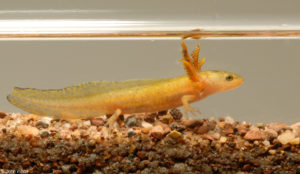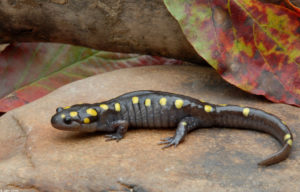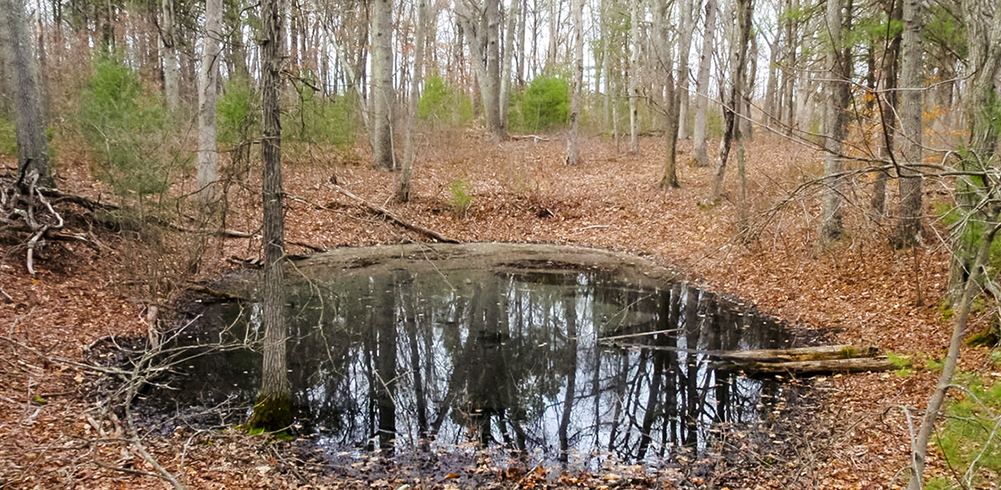 Have you ever ventured into the woods after a rainy spring day and found what appears to be a new pond? You may have discovered one of the most exciting, albeit temporary, habitats in Virginia!
Have you ever ventured into the woods after a rainy spring day and found what appears to be a new pond? You may have discovered one of the most exciting, albeit temporary, habitats in Virginia!
Known as vernal pools, these ephemeral bodies of water appear with rains in the late winter and early spring, and are vital habitats for frogs, salamanders, and even some species of shrimp! Since these are not connected to any other pond or stream, they are entirely devoid of fish, making them the perfect predator-free habitat for larval amphibians.
Salamanders will migrate to these pools en-masse, on a single rainy night in the early spring. The adults will leave shortly after the females deposit egg masses onto small sticks and branches that lay at the bottom of the pool. After a few weeks, the salamander larvae hatch from their eggs. They look remarkably like tadpoles, except they have external, feathery gills. After about eight weeks, they metamorphose into smaller versions of the adults and start their new life on land.
 Vernal pools are critical for the survival of many species, and sometimes they pop up in surprising places! In fact, it is very likely that you have one near or even in your own neighborhood. Since these are exceptionally sensitive habitats, it is advised that you do not enter the pools. This not only prevents the young from being stepped on, but it also stops the spread of amphibian-specific diseases such as ranavirus and chytrid fungus.
Vernal pools are critical for the survival of many species, and sometimes they pop up in surprising places! In fact, it is very likely that you have one near or even in your own neighborhood. Since these are exceptionally sensitive habitats, it is advised that you do not enter the pools. This not only prevents the young from being stepped on, but it also stops the spread of amphibian-specific diseases such as ranavirus and chytrid fungus.
Want to learn more about these exciting wetlands or even visit one in person? The VCU Rice Rivers Center, which conducts vernal pool research, is open to the public on the second Thursday of every month from 1-4pm.

